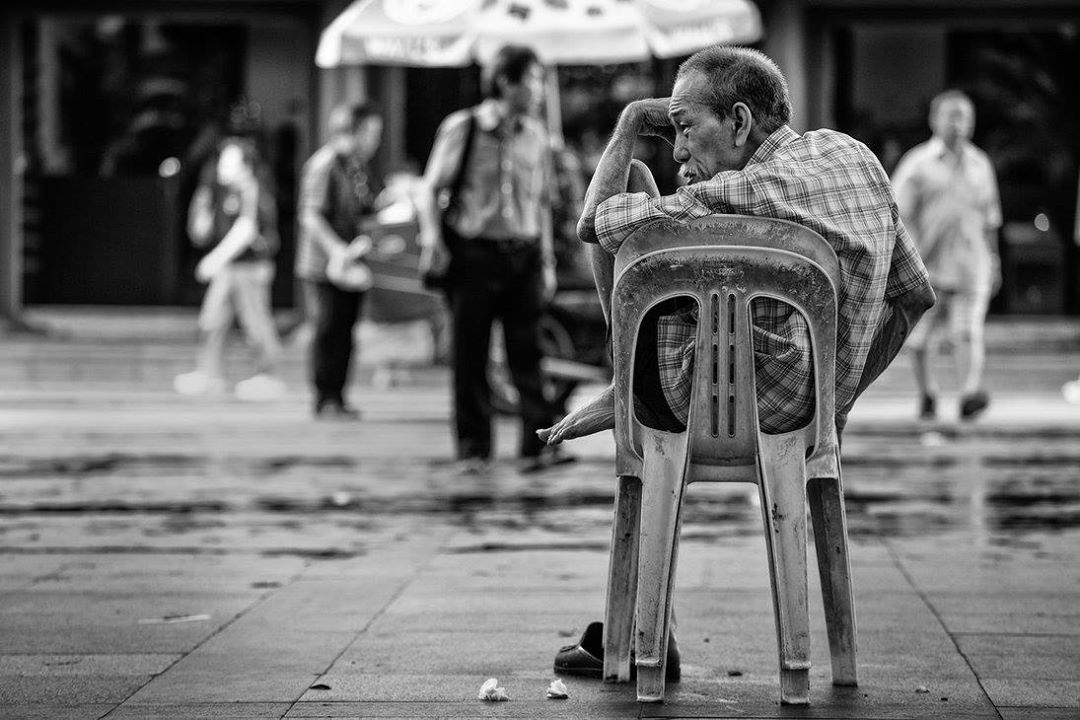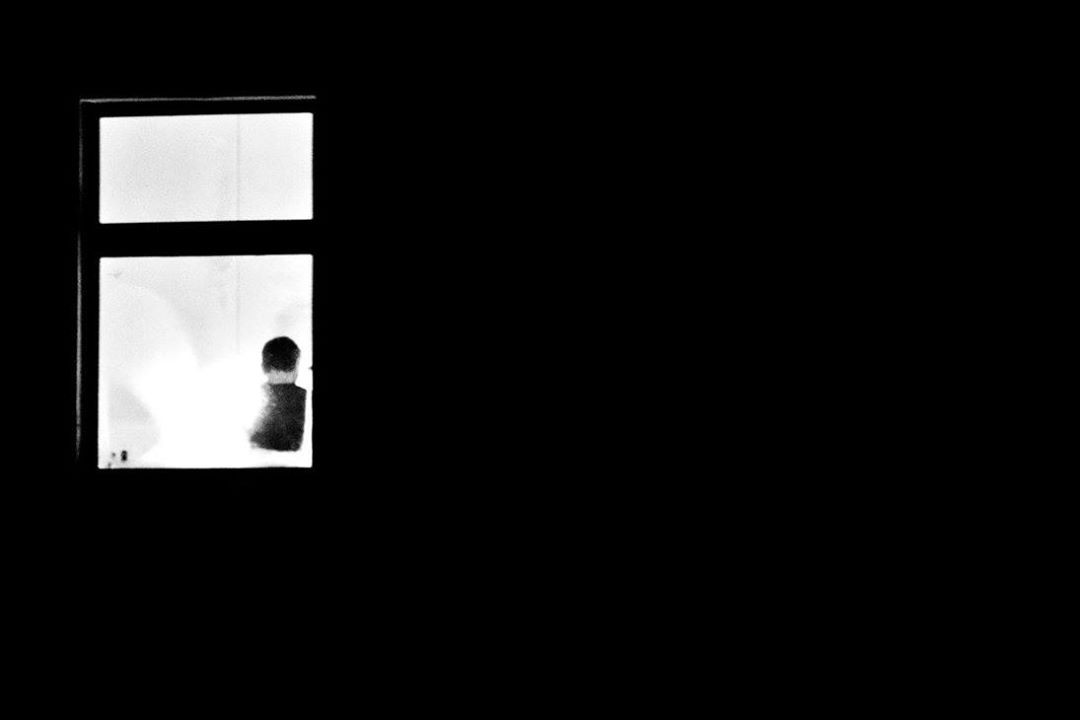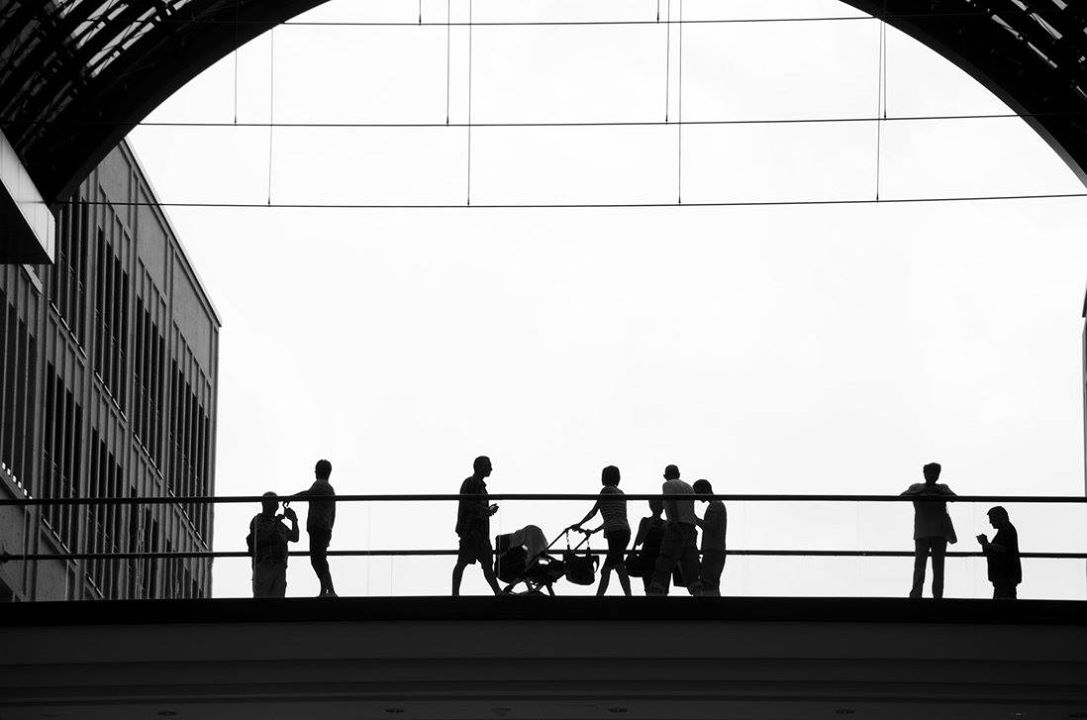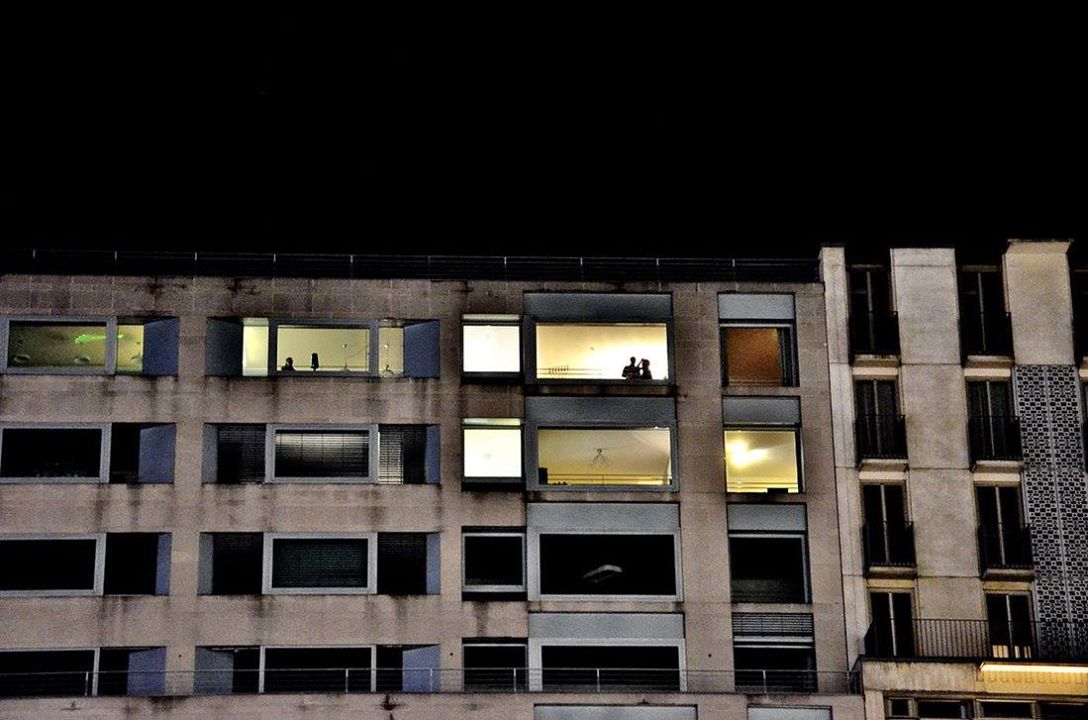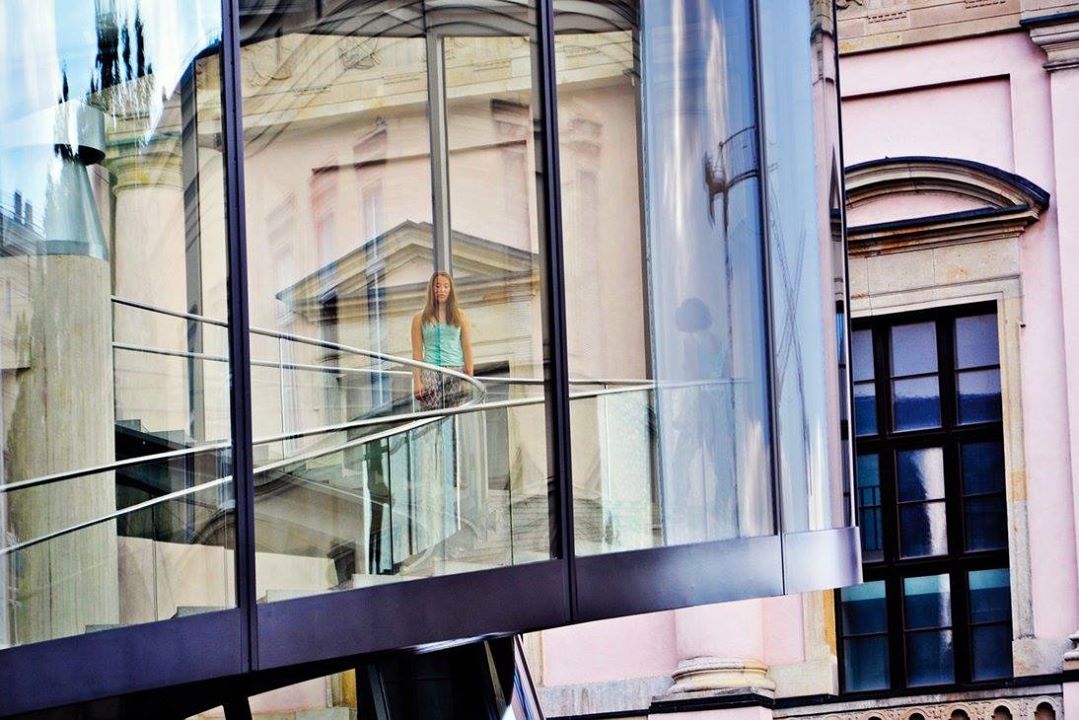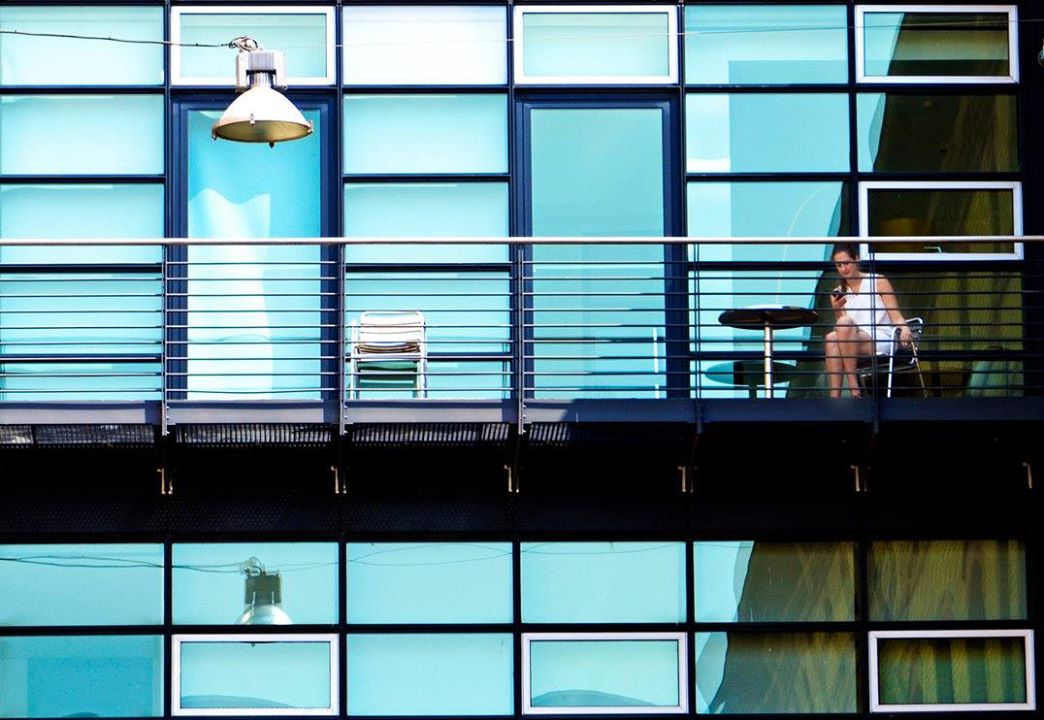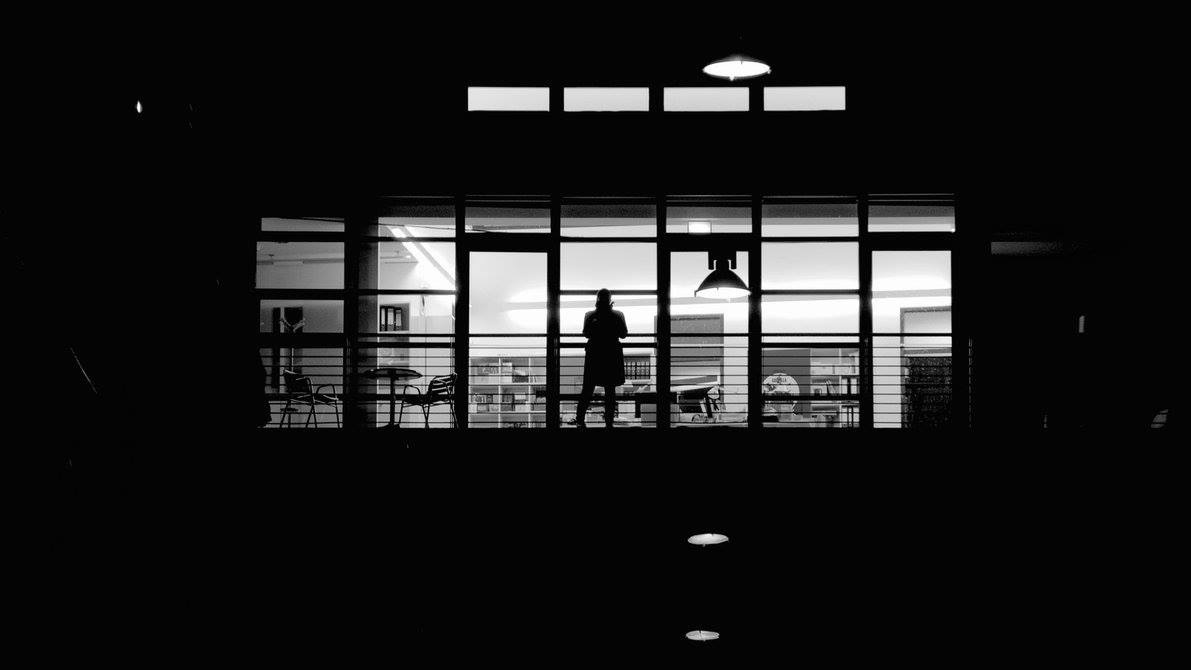telephoto lenses in street photography
by Batsceba Hardy
Many photographers are not a fan of using telephoto lenses in street photography. Generally they find telephoto lenses too impersonal, without the sense of intimacy that lenses with focal lengths of 28mm-55mm (35mm and 50mm in particular) produce. The believe that these shorter focal lengths force you to get closer to your subject (sharing their human condition and feeling their environment). However, if you analyze the works of Leiter, whose street photography is shot with a relatively long lens you have to change your mind: he compresses his scenes creating a peculiar geometric vision Here's what Leiter responds to Dean Brierly
D.B.: Many of your images have a compressed spatial perspective. Was the telephoto your preferred lens?
Leiter: I liked different lenses for different times. I am fond of the telephoto lens, as I am of the normal 50 mm lens. I had at one point a 150 mm lens and I was very fond it. I liked what it did. I experimented a lot. Sometimes I worked with a lens that I had when I might have preferred another lens. I think Picasso once said that he wanted to use green in a painting but since he didn’t have it he used red. Perfection is not something I admire. [Laughs]. A touch of confusion is a desirable ingredient.
Haircut © Saul Leiter
© Saul Leiter
Indeed, the telephoto lens, which compresses the image, has very interesting visual painterly qualities. The distance allows you to relax and compose more freely, without shooting blindly hoping to be lucky.
I will also report this anecdote in defense of a good use of a tele:
Rene Burri: “In those days Henri Cartier-Bresson limited us to lenses from 35 mm to 90 mm. When I showed him the photos he said, ‘brilliant René!’ I went outside and shouted ‘Hah!’ He heard me and said ‘what was that?’ I said, ‘nothing, never mind’. The lens I used was 180 mm – I never told him! At that point I broke loose from my mentor. I killed my mentor!”
Copyright Rene Burri / Magnum Photos. BRAZIL. Sao Paulo. 1960.
"People generally think of telephoto lenses as capturing less space than a wide angle lens for a given framing, but this isn’t totally true. If you’re framing your subject similarly, the compositional space you lose on the 2D plane, you can essentially regain on the Z axis. Meaning, since you have to stand further from your subject for equivalent framing, you get more space in between the camera and your subject to work with, space that so often goes unused. Although photography is a 2 dimensional medium (usually), that doesn’t mean the option to express yourself through the third dimension isn’t there. It just takes a little more work." Napier Lopez
The milk carton golfer. 90mm © Napier Lopez
Many famous photopraphs used telephoto lens:
“Since the early 1950’ Kertész had been photographing using a telephoto lens. Thus at a distance from his subjects, every day he would photograph passerby’s in Washington Square or people reading on they roof terraces from his apartment”
André Kertész: Paris, Autumn 1963 - p. 7 paragraph 1
Circus, Budapest 1920 © André Kertész
Shooting candid: with a telephoto lens you can take pictures without getting noticed
The artistic element you may add to your pics due to the background flattening effect of telephoto lenses
Z-Axis and perspective.
You are not losing the intimacy and the human element just by using a telephoto lens
***PRO: framing, details, compressed perspective, you can photograph without being noticed
***CON: shorter focal lengths are more versatile, faster shutter speeds required, you don’t engage with your subject.
Ultimately: there is no “perfect” focal length for Street Photography: the best lens for Street Photography is the lens you have on you. An artwork doesn’t need to be defined by the tools you used to get that result, it should be defined by the end result:
Focal Length 200 mm © Matt Lain
Focal Length 155 mm, Confinement © Jonathan Danker
I’m a “street photographer” of the distance (105 mm):
Batsceba Hardy







